Enhanced RNA polymerase III-dependent transcription is required for oncogenic transformation
- PMID: 18456653
- PMCID: PMC2443659
- DOI: 10.1074/jbc.M802872200
Enhanced RNA polymerase III-dependent transcription is required for oncogenic transformation
Abstract
RNA polymerase (pol) III transcription, responsible for the synthesis of various stable RNAs, including 5 S rRNAs and tRNAs, is regulated by oncogenic proteins and tumor suppressors. Although it is well established that RNA pol III-dependent transcription is deregulated in transformed cells and malignant tumors, it has not been determined whether this represents a cause or consequence of these processes. We show that Rat1a fibroblasts undergoing oncogenic transformation by the TATA-binding protein or c-Myc display enhanced RNA pol III transcription. Decreased expression of the RNA pol III-specific transcription factor Brf1 prevented this increase in RNA pol III transcription. Although the overall proliferation rates of these cells remained unchanged, the ability of cells to grow in an anchorage-independent manner and form tumors in mice was markedly reduced. Although overexpression of Brf1 modestly stimulated RNA pol III transcription, expression of a phosphomimic, Brf1-T145D, more significantly induced transcription. However, these increases in transcription were not sufficient to promote cellular transformation. Together, these results demonstrate that enhanced RNA pol III transcription is essential for anchorage-independent growth and tumorigenesis and that these events can be uncoupled from effects on anchorage-dependent proliferation.
Figures
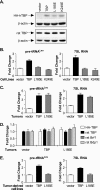
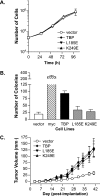
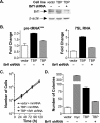
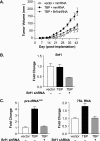
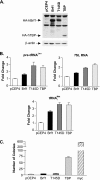

References
Publication types
MeSH terms
Substances
Grants and funding
LinkOut - more resources
Full Text Sources
Molecular Biology Databases

